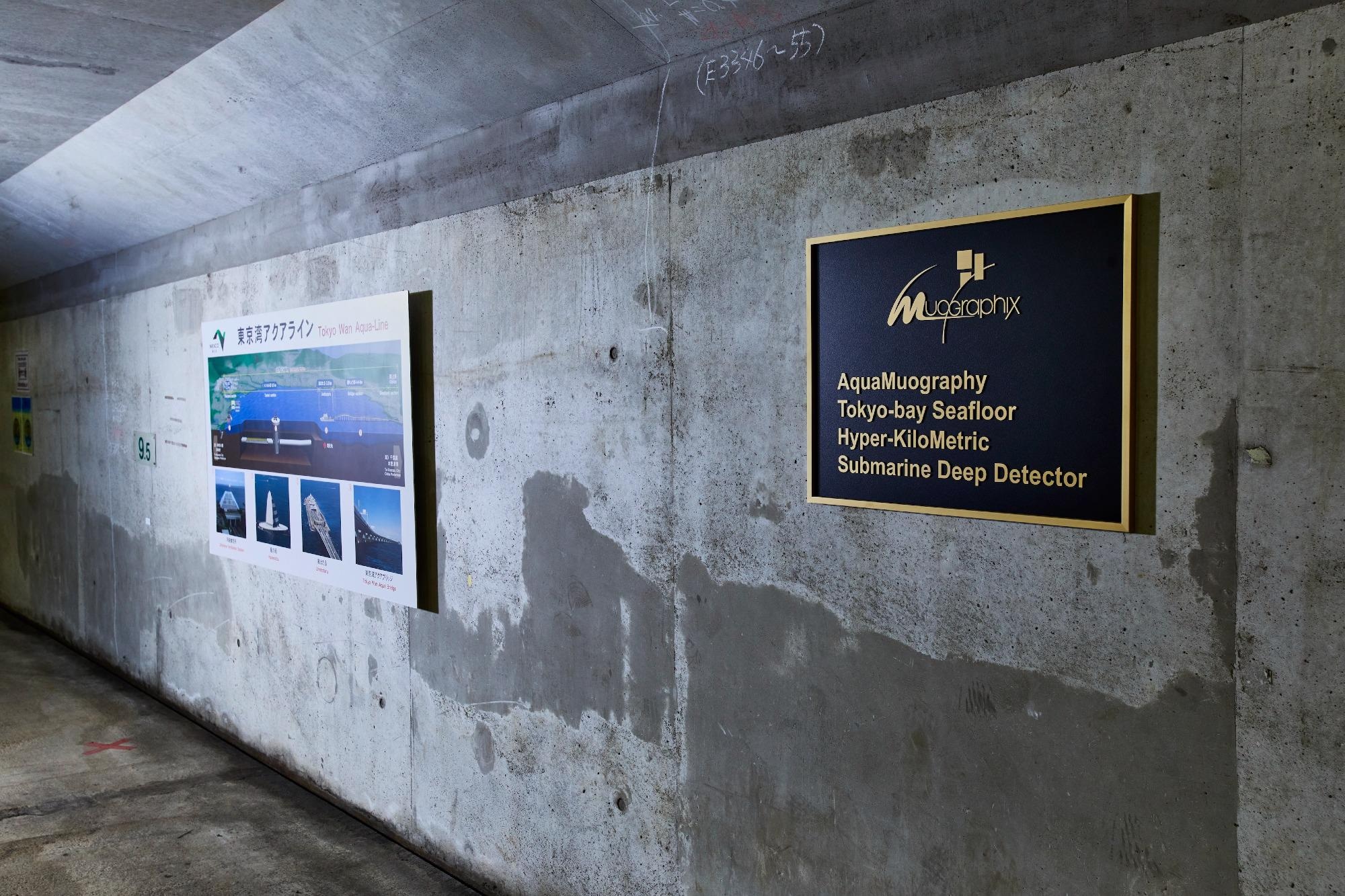Apr 15 2022Reviewed by Matt Pullen, B.Sc.
Muons are highly energetic particles that are ever-present in the air and pass by huge, uniform objects with comfort. Sensitive detectors that have been installed along the Tokyo Bay tunnel quantify muons passing via the sea present above them.
 Undersea laboratory. The gold plaque commemorates the installation. It is probably the only public road tunnel in the world that is also a working science laboratory. Image Credit: 2022 Tanaka et al.
Undersea laboratory. The gold plaque commemorates the installation. It is probably the only public road tunnel in the world that is also a working science laboratory. Image Credit: 2022 Tanaka et al.
This enables variations in the volume of water over the tunnel to be estimated. For the first time, this technique was utilized to precisely detect a mild tsunami after a typhoon in 2021.
In the time it takes one to read this sentence, nearly 100,000 muon particles will have passed via the body. However, there is no need to worry, muons pass via ordinary matter cautiously, and they could be extremely helpful too. Professor Hiroyuki Tanaka from Muographix at the University of Tokyo has made a career out of examining applications for muons.
The researcher has utilized muons to see inside volcanoes and detect proof of ancient earthquakes. In recent times, Tanaka and his international group of researchers have turned their focal point to meteorological phenomena, specifically, tsunamis.
In September 2021, a typhoon neared Japan from the south. As the typoon approached land, it brought with it ocean swells and tsunamis. In this case, these were quite gentle, but throughout history, tsunamis have resulted in huge damage to several coastal areas near Japan.
Since the huge swell shifted into Tokyo Bay, something occurred on a microscopic level that is nearly indiscernible. The atmospheric muon particles, produced by cosmic rays from deep space, were ever so slightly more disordered by the extra volume of water compared to what they would be different. This implies that the number of muons passing via Tokyo Bay differed as the ocean swelled.
The Tokyo-bay Seafloor Hyper KiloMetric Submarine Deep Detector (TS-HKMSDD) is the first underwater muon observatory in the world, and it detected varying muon activity during the tsunami.
Hiroyuki Tanaka, Professor, Muographix, University of Tokyo
Tanaka added, “This variation corresponds to the ocean swells which were measured by other methods. Combining these readings means we can use muographic data to accurately model changes in sea level, bypassing other methods which come with drawbacks.”
Other approaches are also available to quantify changes that are taking place at the sea level, with physical mechanisms like tide gauges, buoys, satellites or sensors on the seafloor itself. However, the TS-HKMSDD and future instruments that depend on it, installed in undersea tunnels, could be affordable to build and run, and also simpler to access.
Furthermore, they do not experience physical wear and tear as there are no moving parts. Crucially though, the data from TS-HKMSDD can be obtained in real-time and is highly precise, two main criteria that can make it appropriate for a trustworthy early warning system.
Thanks to the success we’ve had from early tests such as this, similar systems are already being trialed in the U.K. and Finland. Obviously, an undertaking like this comes with challenges, and installing delicate instruments in a busy tunnel could be difficult.
Hiroyuki Tanaka, Professor, Muographix, University of Tokyo
Tanaka added, “But we are grateful for the cooperation of the agencies responsible for the Tokyo Bay tunnel. To the best of my knowledge, the tunnel is now the first active national road in the world defined as a laboratory.”
Tanaka and his research team have many other approaches at hand to utilize muons, including a possible technique to precisely synchronize time throughout the world. Also, in connection with that, a spatial positioning system is far more precise than the present GPS.
Journal Reference:
Tanaka, H. K. M., et al. (2022) Periodic sea-level oscillation in Tokyo Bay detected with the Tokyo-Bay seafloor hyper-kilometric submarine deep detector (TS-HKMSDD). Scientific Reports. doi.org/10.1038/s41598-022-10078-2.
Source: https://www.u-tokyo.ac.jp/en/index.html